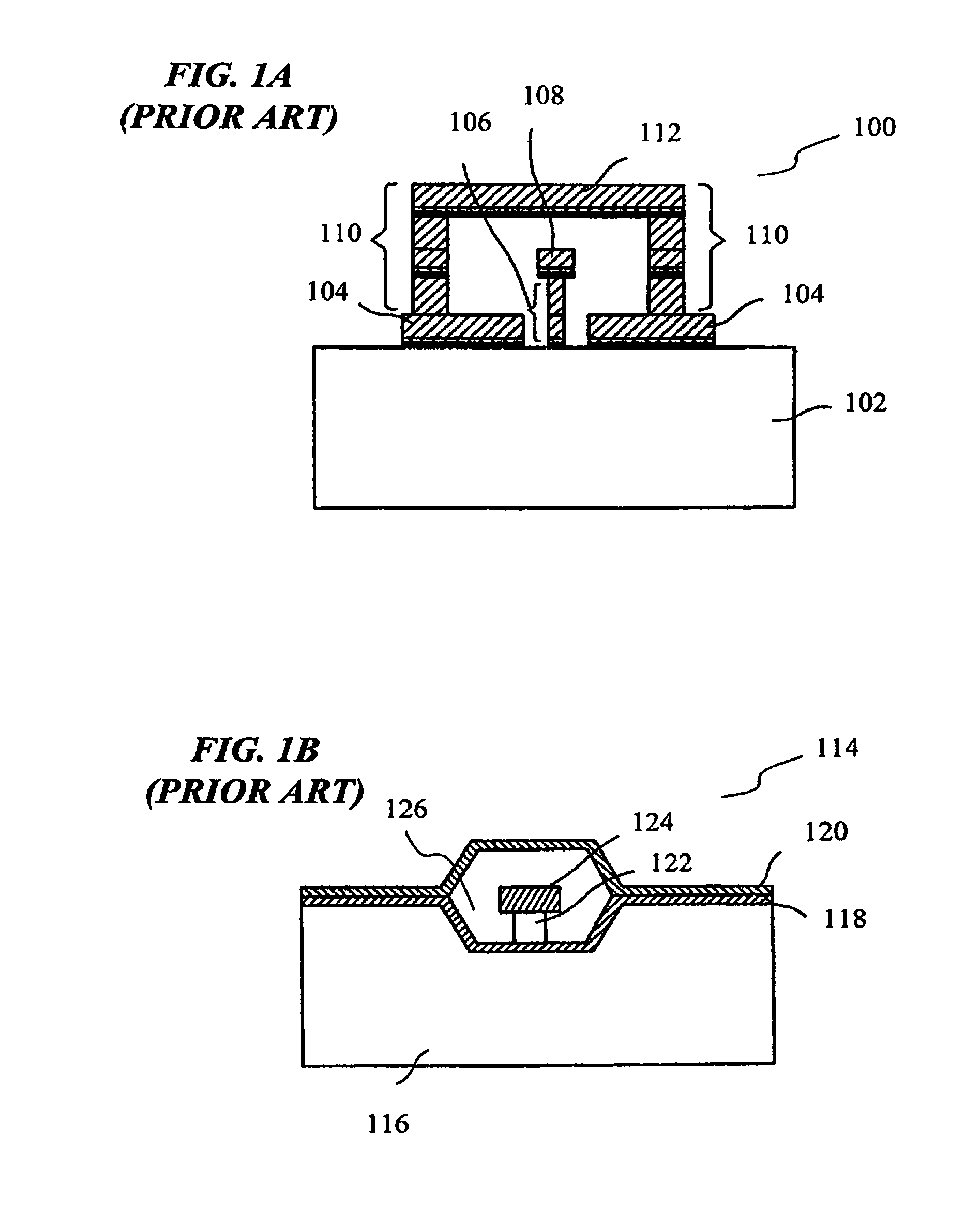Coaxial waveguide microstructures and methods of formation thereof
a microstructure and waveguide technology, applied in waveguides, waveguide types, insulation conductors/cables, etc., can solve the problems of coaxial waveguide structure, create signal interference, and process is not readily scalable to a stacked structure having a plurality of coaxial layer structures
- Summary
- Abstract
- Description
- Claims
- Application Information
AI Technical Summary
Benefits of technology
Problems solved by technology
Method used
Image
Examples
Embodiment Construction
[0022]The exemplary processes to be described involve a sequential build to create microstructures containing metal, dielectric and gas or a vacuous atmosphere. In the sequential build process, a structure is formed by sequentially layering various materials in a defined manner. When implemented with lithographic patterning and other optional processes, for example, planarization techniques, a flexible method to form a variety of components, such as the exemplified suspended coaxial waveguide microstructures, is provided.
[0023]The sequential build process is generally accomplished through processes including one or more of: (a) metal coating, sacrificial photoresist coating, and dielectric coating processes; (b) surface planarization; (c) photolithography; and (d) etching or other layer removal processes. In depositing metal, plating techniques have been found to be particularly useful, although other metal deposition techniques such as physical vapor deposition (PVD) and chemical v...
PUM
| Property | Measurement | Unit |
|---|---|---|
| thickness | aaaaa | aaaaa |
| skin depth | aaaaa | aaaaa |
| thickness | aaaaa | aaaaa |
Abstract
Description
Claims
Application Information
 Login to View More
Login to View More - R&D
- Intellectual Property
- Life Sciences
- Materials
- Tech Scout
- Unparalleled Data Quality
- Higher Quality Content
- 60% Fewer Hallucinations
Browse by: Latest US Patents, China's latest patents, Technical Efficacy Thesaurus, Application Domain, Technology Topic, Popular Technical Reports.
© 2025 PatSnap. All rights reserved.Legal|Privacy policy|Modern Slavery Act Transparency Statement|Sitemap|About US| Contact US: help@patsnap.com



